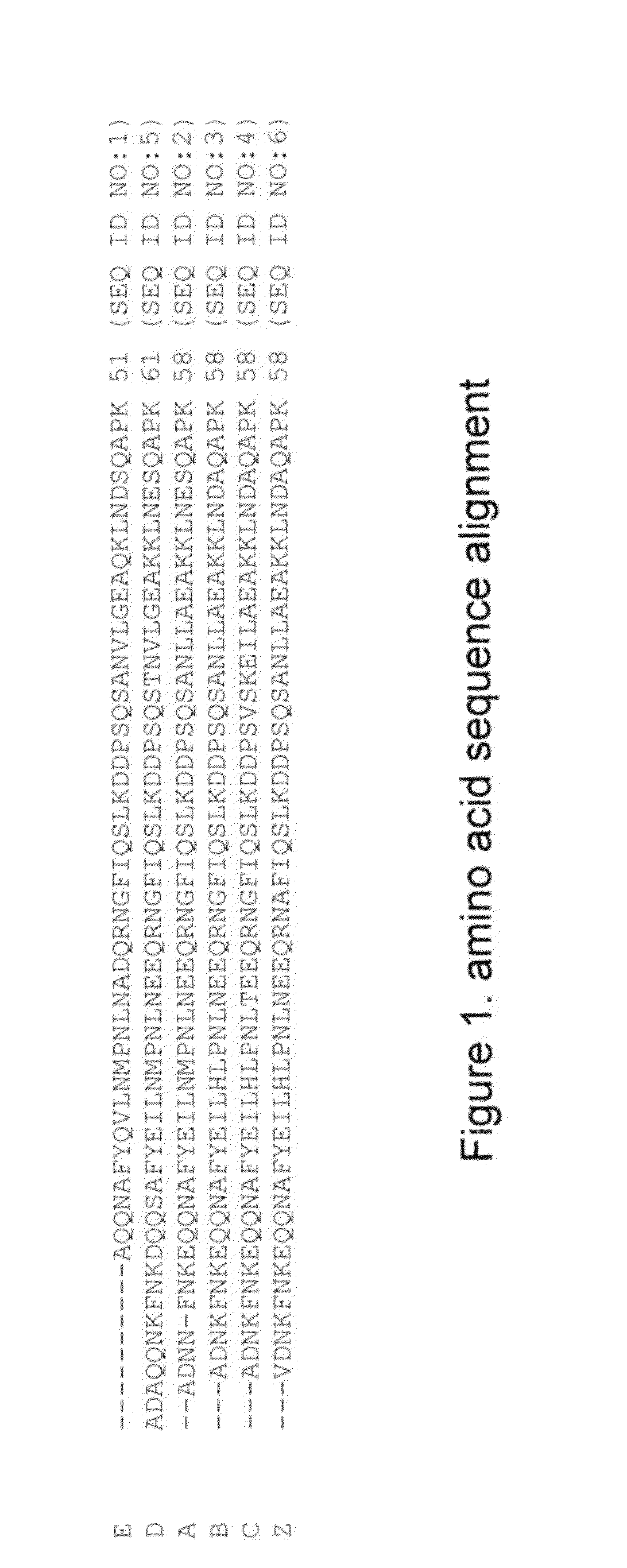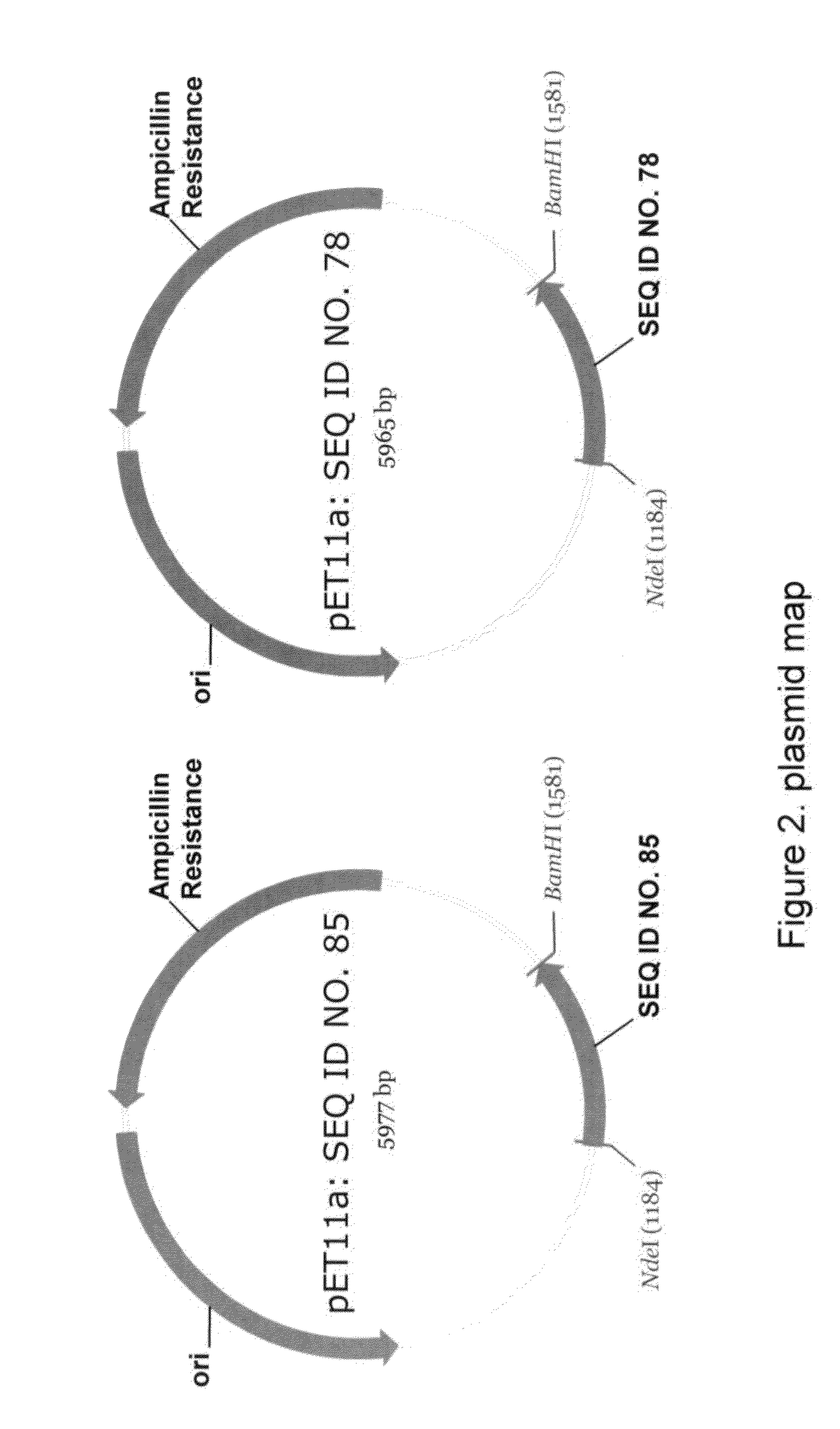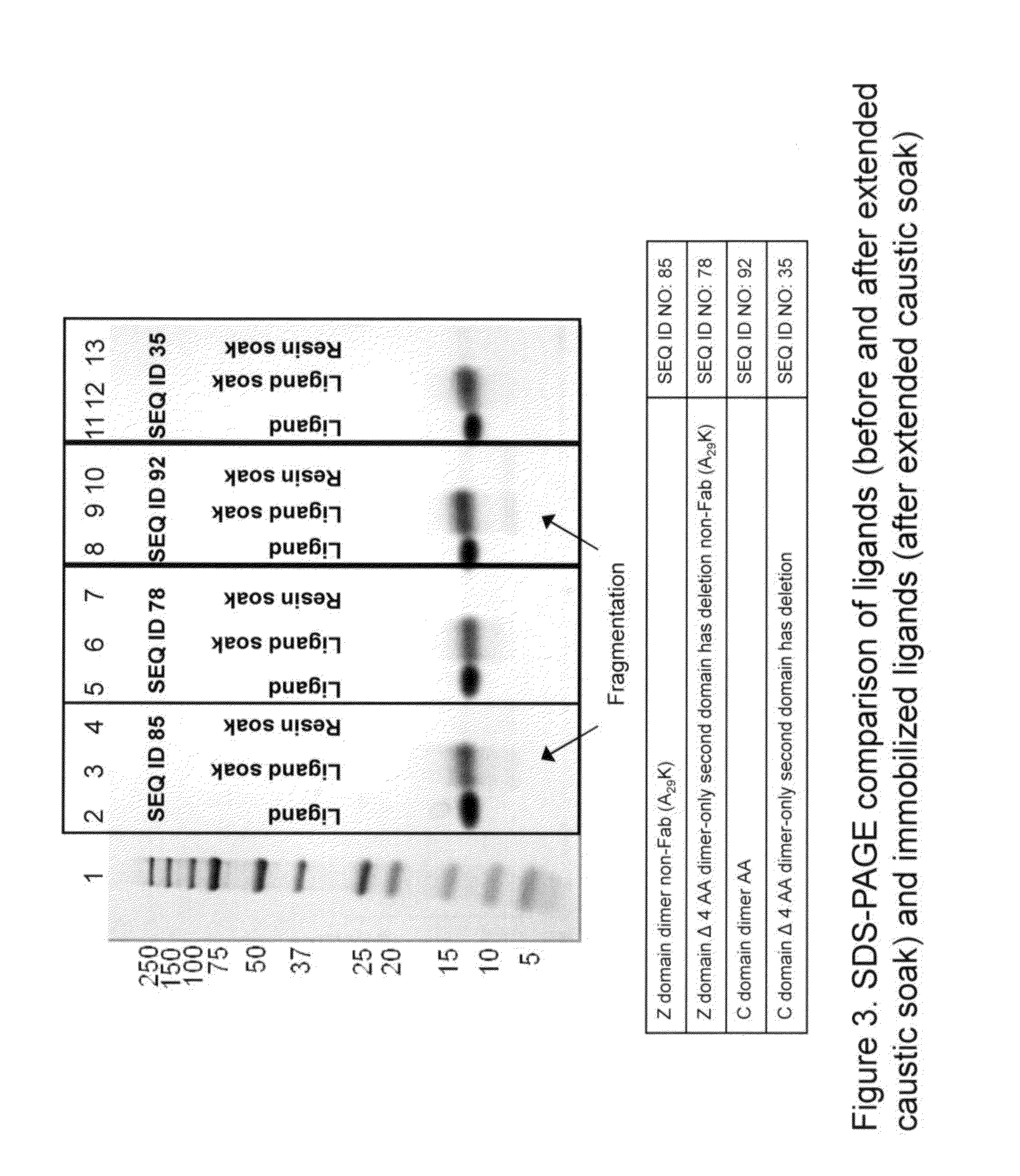Chromatography matrices including novel staphylococcus aureus protein a based ligands
- Summary
- Abstract
- Description
- Claims
- Application Information
AI Technical Summary
Benefits of technology
Problems solved by technology
Method used
Image
Examples
example 1
Generation of Spa Ligands with One or More Domains Having an N-terminus Deletion of 4 Consecutive Amino Acids
[0156]Synthetic genes encoding the following proteins were obtained from DNA 2.0 (Menlo Park, Calif.). A SpA dimeric protein containing two Z domains, each domain containing the mutation at position 29 (A29K) to reduce or eliminate Fab binding (amino acid sequence shown in SEQ ID NO: 85); and a SpA dimeric protein containing two Z domains, each domain containing the A29K mutation and the second Z domain containing a deletion to delete 4 consecutive amino acids from the N-terminus (amino acid sequence shown in SEQ ID NO:78).
[0157]The 5′ end of each synthetic gene includes a codon for an initiating methionine and the 3′ end includes six histidine codons (SEQ ID NO:86) for subsequent purification using NiNTA column. The 5′ and 3′ ends of each gene contain NdeI and BamHI restriction sites, respectively. These synthetic genes as well as the expression vector that is used, i.e., pE...
example 2
Expression and Purification of SpA-Based Ligands
[0161]As discussed above, any suitable bacterial expression system can be used for expressing the various SpA ligands described herein. For example, the protein may be expressed in an Escherchia coli strain such as strain BL21 (DE3) (PROMEGA, Madison Wis.) using a pET vector such as pET11a (EMD).
[0162]A single colony is selected from a plate and grown overnight at 37° C. in LB media containing 100 μg / mL ampicillin. The overnight culture is diluted 100-fold into fresh LB media containing 100 μg / mL ampicillin and grown to a cell density such that the optical density at 600 nm is ˜0.8. Following the addition of 1 mM isopropyl-beta-D-thiogalactopyranoside, cells are grown for an additional two hours. Expression is confirmed by SDS-PAGE analysis and Western blotting.
[0163]Cells are harvested by centrifugation (4000 rpm, 4° C., 5 minutes) and resuspended in 3 mL of phosphate buffered saline containing 20 mM imidazole. Cells are lysed by soni...
example 3
Attachment of SpA-Based Ligands to a Solid Support
[0164]Subsequent to the generation and expression of various ligands, as described in Examples 1 and 2, they were immobilized via multipoint attachment to a solid support.
[0165]In an exemplary experiment, agarose resin (Sepharose 4B) (GE HEALTHCARE) is crosslinked using epichlorohydrin according to a previously described method (Porath and Formstedt, J. Chromatography, 51:479 (1979)). The agarose resin is subsequently reacted with positively charged associative groups, e.g., cations, according to the following method: to 10 mL of resin, 5 mL of 75% wt glycidyl trimethylammonium chloride (GTMAC), 5 mL Milli-Q® water (MILLIPORE, Billerica, Mass.) and 0.258 g 50% wt sodium hydroxide is added. The reaction vial is rotated in a Techne HB-1D hybridizer (BIBBY SCIENTIFIC, Burlington, N.J.) overnight at room temperature. The resin is then filtered and washed with three 10-mL volumes of Milli-Q® water (MILLIPORE, Billerica, Mass.).
[0166]The r...
PUM
| Property | Measurement | Unit |
|---|---|---|
| Fraction | aaaaa | aaaaa |
| Time | aaaaa | aaaaa |
| Time | aaaaa | aaaaa |
Abstract
Description
Claims
Application Information
 Login to View More
Login to View More - R&D
- Intellectual Property
- Life Sciences
- Materials
- Tech Scout
- Unparalleled Data Quality
- Higher Quality Content
- 60% Fewer Hallucinations
Browse by: Latest US Patents, China's latest patents, Technical Efficacy Thesaurus, Application Domain, Technology Topic, Popular Technical Reports.
© 2025 PatSnap. All rights reserved.Legal|Privacy policy|Modern Slavery Act Transparency Statement|Sitemap|About US| Contact US: help@patsnap.com



